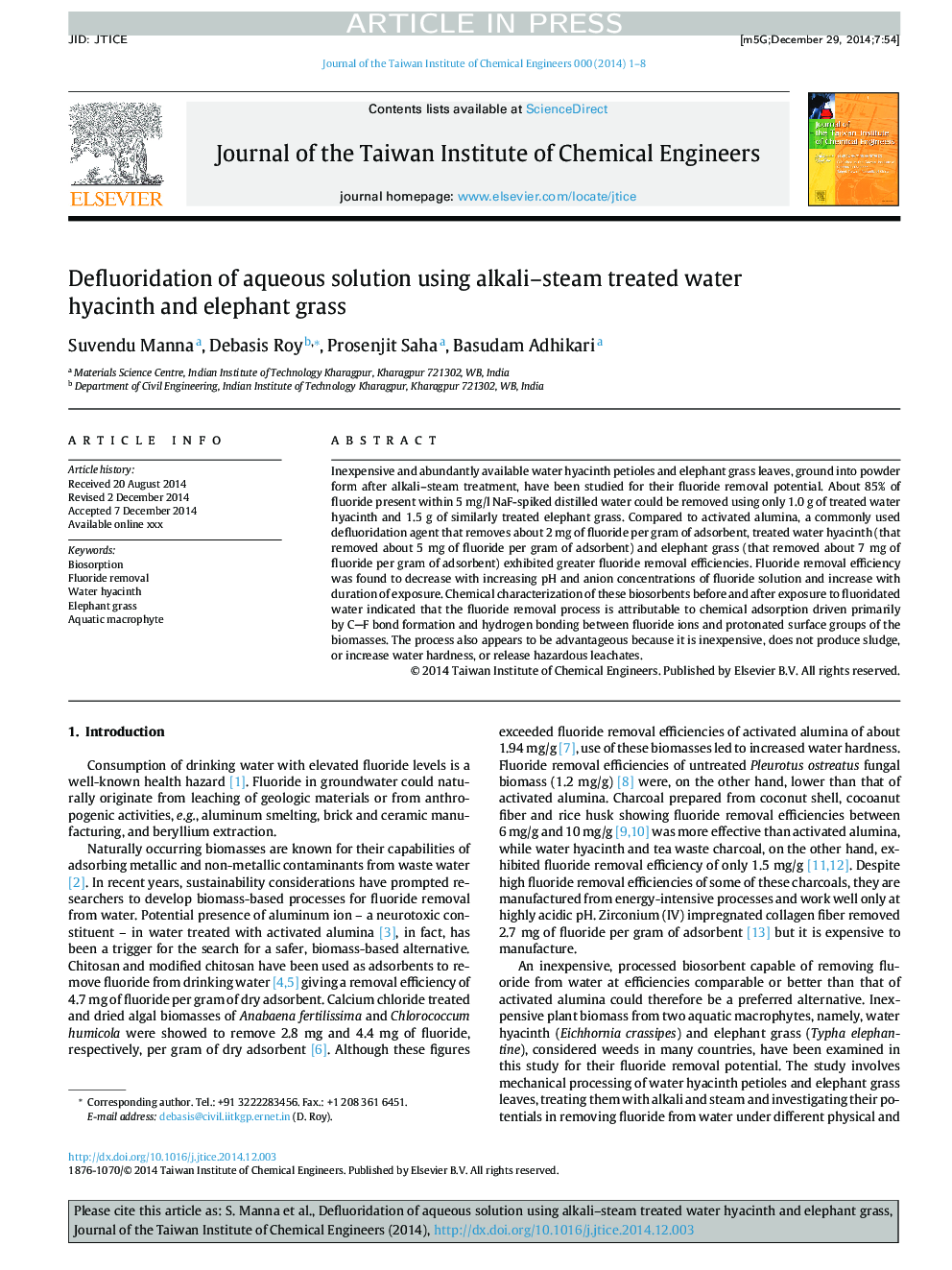| Article ID | Journal | Published Year | Pages | File Type |
|---|---|---|---|---|
| 690749 | Journal of the Taiwan Institute of Chemical Engineers | 2015 | 8 Pages |
Abstract
Inexpensive and abundantly available water hyacinth petioles and elephant grass leaves, ground into powder form after alkali-steam treatment, have been studied for their fluoride removal potential. About 85% of fluoride present within 5Â mg/l NaF-spiked distilled water could be removed using only 1.0Â g of treated water hyacinth and 1.5Â g of similarly treated elephant grass. Compared to activated alumina, a commonly used defluoridation agent that removes about 2Â mg of fluoride per gram of adsorbent, treated water hyacinth (that removed about 5Â mg of fluoride per gram of adsorbent) and elephant grass (that removed about 7Â mg of fluoride per gram of adsorbent) exhibited greater fluoride removal efficiencies. Fluoride removal efficiency was found to decrease with increasing pH and anion concentrations of fluoride solution and increase with duration of exposure. Chemical characterization of these biosorbents before and after exposure to fluoridated water indicated that the fluoride removal process is attributable to chemical adsorption driven primarily by CâF bond formation and hydrogen bonding between fluoride ions and protonated surface groups of the biomasses. The process also appears to be advantageous because it is inexpensive, does not produce sludge, or increase water hardness, or release hazardous leachates.
Related Topics
Physical Sciences and Engineering
Chemical Engineering
Process Chemistry and Technology
Authors
Suvendu Manna, Debasis Roy, Prosenjit Saha, Basudam Adhikari,
